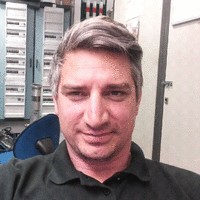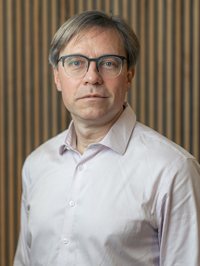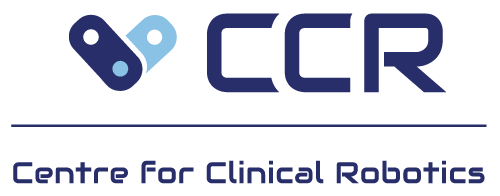HUBOT (2019-2020)
At a large hospital such as Odense University Hospital, the physical distance between departments, laboratories, etc. can be considerable, and the staff spends both time and effort getting from one end to the other.
PROJECT PERIOD
Start: Spring 2019
End: Spring 2020
The robot is in operation at the hospital.
AIM
The purpose of the HUBOT robot was to relieve the staff by arranging transport of blood samples on ice, blood samples under heat, urine containers and project blood samples, which cannot be sent by pneumatic dispatch and tempus blood sample transport.
HUBOT is an Autonomous Mobile Robot (AMR), which can move among patients, staff, bed transports, cleaning staff, garbage trolleys, and more.
The aim of the project was first and foremost to relieve the staff so that they could spend their time on the tasks that require their professional knowledge, but also to form a general knowledge of the use of robots and a professional knowledge of programming robots - very useful when relocating to New OUH.
RESULTS
Every morning at 5 am, HUBOT arrives at three of OUH's intensive care units to collect the blood samples from that morning. Before HUBOT, a nurse had to leave the ward and patients to transport the samples. HUBOT has freed up approximately 2.5 hours daily, which were previously spent walking back and forth. These hours have freed up time for more research, care and treatment for the patients.
HUBOT drives six-seven kilometres every day between three floors and three pick-up points.
OUH has programmed and set up the robot, which has provided a good insight into the technology as well as an understanding of how staff and patients interact with an AMR. The implementation and reception among the health professionals has been a high priority, and HUBOT was well received and has brought smiles to both staff and patients. A competition for the name contributed to a sense of ownership among users from the start.
The primary advantages of HUBOT are:
- A significantly better sample flow at the departments.
- The health professionals now have more time for what they are trained for.
- Samples arrive more often at the laboratory and not in peaks.
PARTNERS
- Department of Clinical Biochemistry and Pharmacology (KBF)
- Department of Clinical Genetics (KGA)
- Facilities Management (BDS)
- SDU Robotics, The Maersk Mc-Kinney Moller Institute, University of Southern Denmark (SDU)
FUNDING
The project was financed by New OUH as well as by the Department of Clinical Biochemistry and Pharmacology and by Facilities Management at OUH.
For the first test period, the robot was on loan from SDU Robotics. After testing, OUH purchased the robot for operation.

Esben Hansen
Technical Manager, Team Leader
Centre for Clinical Robotics (CCR). Odense University Hospital, Facilities Management
(+45) 5146 6767 eha@rsyd.dk

Rikke Kiilsholm
Specialist
Odense University Hospital, Department of Clinical Biochemistry
(+45) 2176 1028 rikke.kiilsholm@rsyd.dk

Mads Nybo
Head of Department
Odense University Hospital, Department of Clinical Biochemistry
(+45) 2055 3952 mads.nybo@rsyd.dk

Dorthe Vikkelsø Pedersen
Department Bioanalyst
Odense University Hospital, Department of Clinical Genetics
(+45) 2042 9136 dorthe.v.pedersen@rsyd.dk
